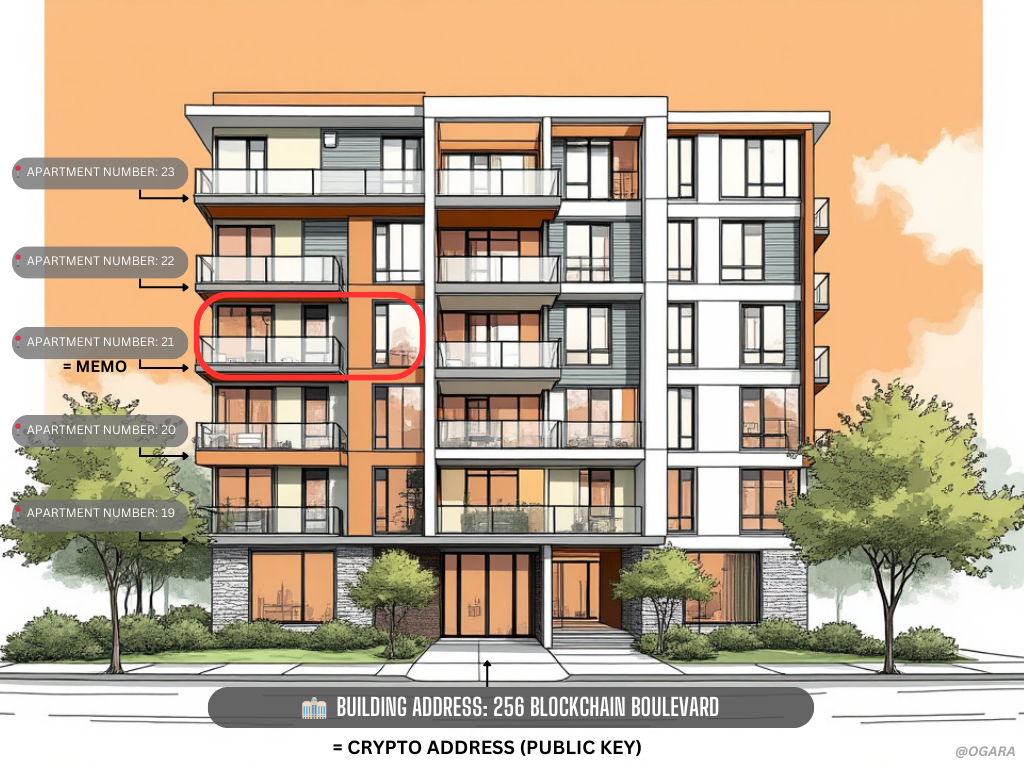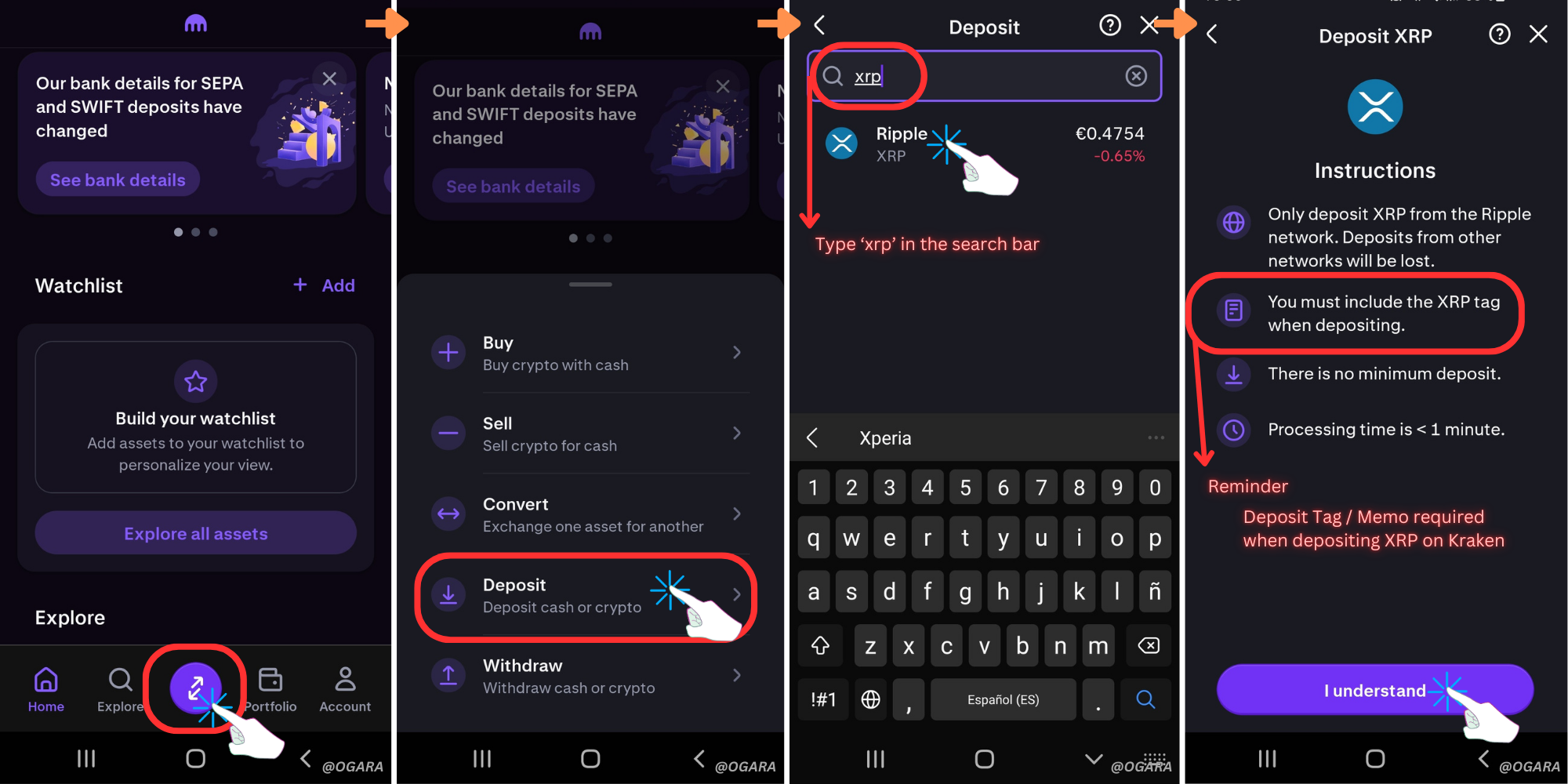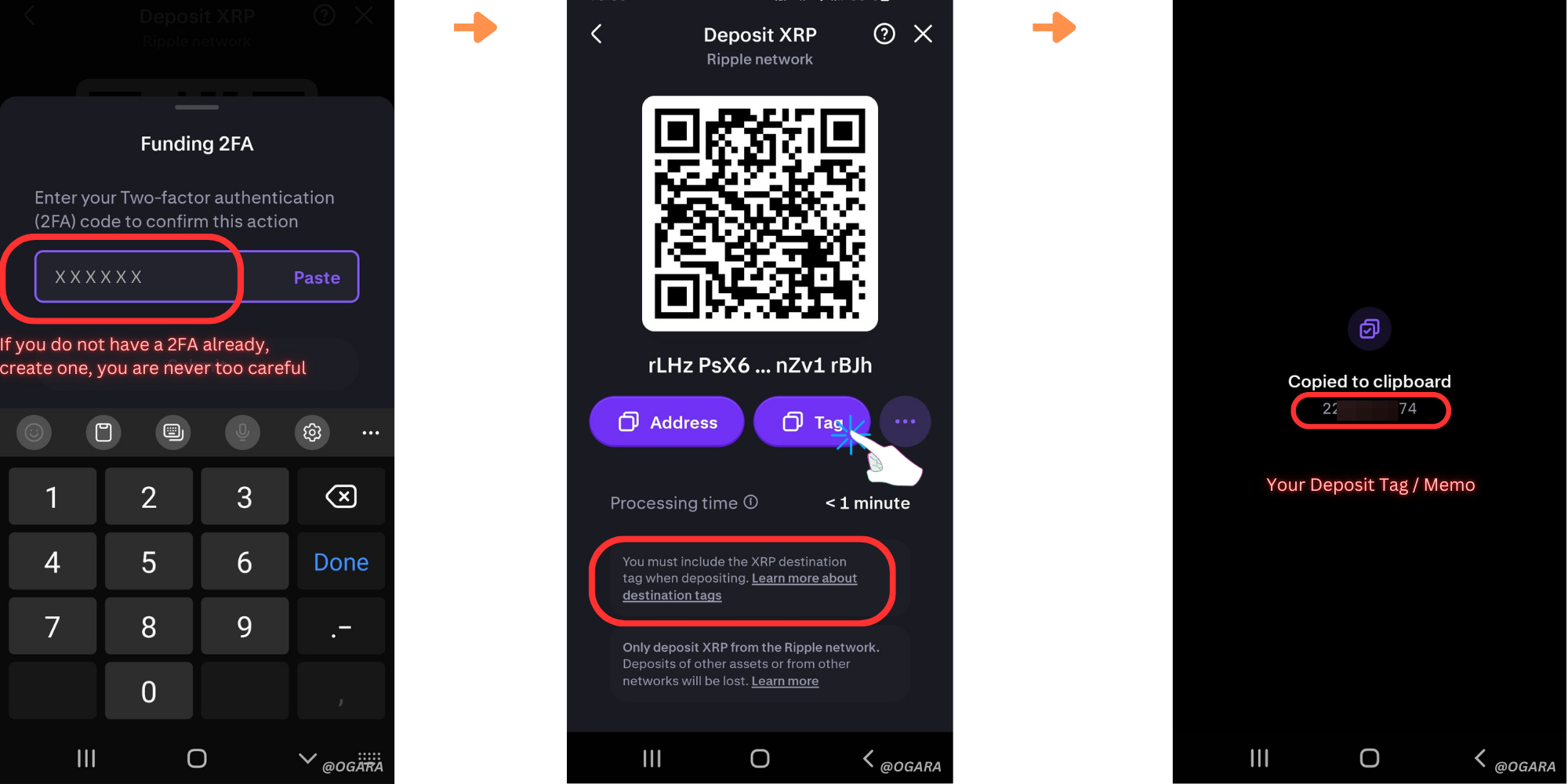🎓 Explained: Why Your Crypto Transaction Needs a Memo

Have you ever wondered why your wallet asks you to enter a Memo when sending a crypto transaction? What is a Memo, and why is it necessary?
❗ Before diving into the topic, keep in mind that this will only apply for the following coins: Ripple (XRP), Sellar (XLM), EOS (EOS), Binance Coin (BNB), Kin (KIN), Cosmos (ATOM), Terra Classic (LUNC), Osmosis (OSMO), NEM (XEM), Monero (XMR)
With the Blockchain already being complex enough, is this extra step really needed?
In short, Yes, and that’s the reason why:
Think of it like living in an apartment. The building has one address, and that address is shared by all the apartments inside.
- 🏢 Building address: 256 Blockchain Boulevard
- 📍 Apartment number: 21
If someone sends a package to your building, they need to include your apartment number so it gets to you.
Without the apartment number, the delivery will fail

It is the same concept for a crypto transaction, some crypto wallets are asking you for a Memo when you want to send a coin.
Simply put, the address you're sending to might be shared by multiple wallets. To ensure the funds reach the correct wallet, a Memo is required.
A Memo is also called a Destination Tag, Message or even Payment ID. Ultimately, they are all synonyms and serve the same purpose: identifying the end user intended to receive the transaction.
- The denomination is applied according to the specific requirements of each coin:
- XRP uses a Destination Tag
- XLM, EOS, BNB, KIN, ATOM, LUNC, OSMO utilize Memo
- XEM requires a Message
- XMR needs a Payment ID
Let's take an example, you're looking to deposit or receive Ripple (XRP) in your Kraken wallet.
If you're on your mobile and need to generate both the address and Memo (Destination Tag) to provide to the sender, follow these steps. Even if you're sending XRP to yourself from another wallet, the Memo will still be required.
Here’s a simple step-by-step guide to follow:


In this situation, the Destination Tag (Memo) is required because all Kraken accounts share a single Ripple (XRP) deposit address. The Memo ensures that Kraken can accurately identify and credit the correct wallet.
This apply to any type of wallet. Hot, Cold,Custodial and Non-Custodial Wallets.
Below is a list of well-known crypto wallets along with their help articles that guide you through using memos:
🔥 Hot & Custodial wallets:
Hot & Non-Custodial wallets:
❄️ Cold wallets
In summary, adding a Memo to your crypto transactions might seem like an extra step, but it's crucial in some cases, especially when using exchanges like Kraken or Binance that use a single address for multiple accounts/wallets.
The Memo makes sure your funds go to the right wallet. As the crypto world changes, knowing these details helps keep your transactions smooth and secure.
❗ Always remember to check your Memo before sending crypto, it’s a small step that can prevent problems.
